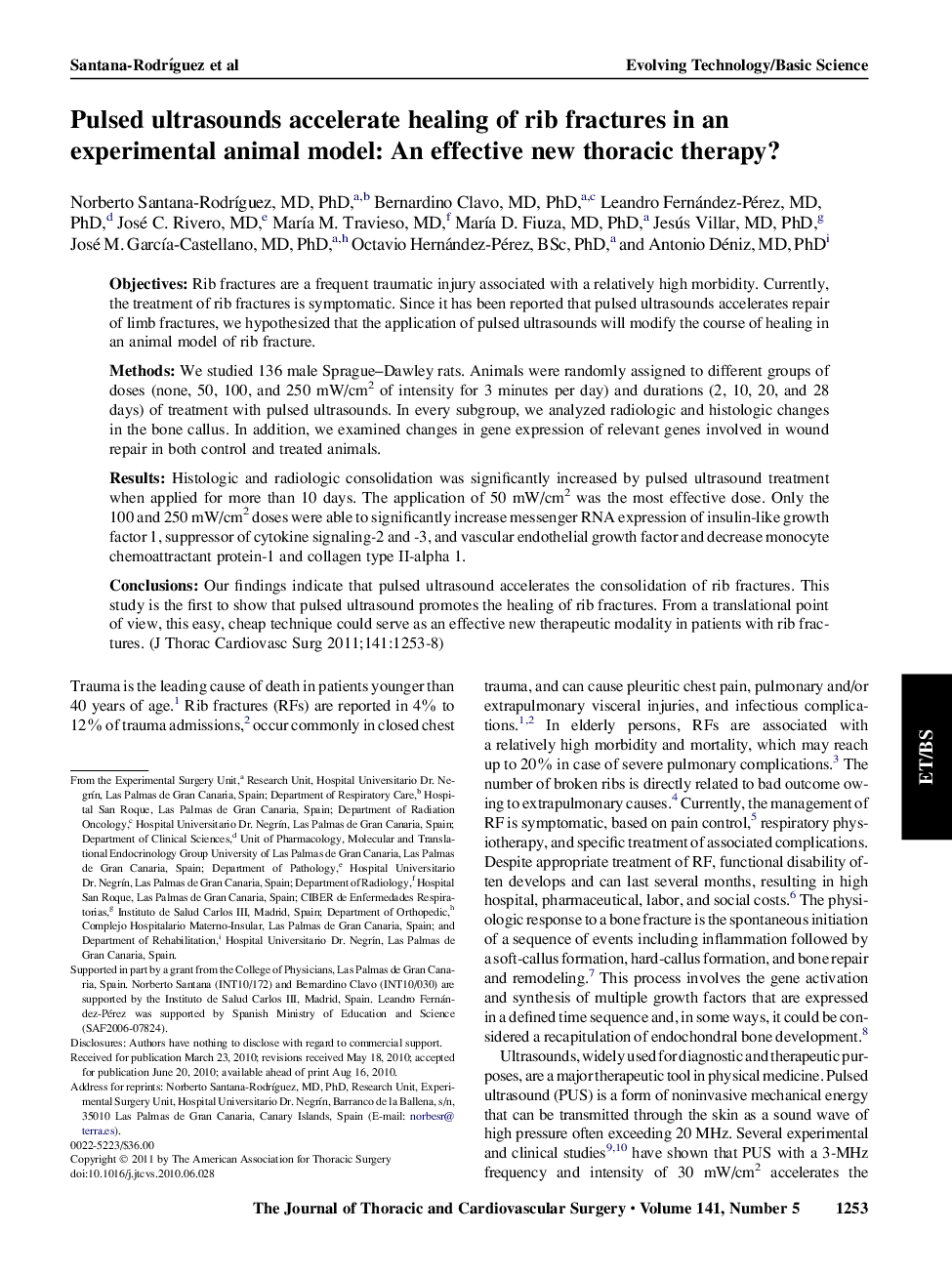| Article ID | Journal | Published Year | Pages | File Type |
|---|---|---|---|---|
| 5992171 | The Journal of Thoracic and Cardiovascular Surgery | 2011 | 6 Pages |
ObjectivesRib fractures are a frequent traumatic injury associated with a relatively high morbidity. Currently, the treatment of rib fractures is symptomatic. Since it has been reported that pulsed ultrasounds accelerates repair of limb fractures, we hypothesized that the application of pulsed ultrasounds will modify the course of healing in an animal model of rib fracture.MethodsWe studied 136 male Sprague-Dawley rats. Animals were randomly assigned to different groups of doses (none, 50, 100, and 250 mW/cm2 of intensity for 3 minutes per day) and durations (2, 10, 20, and 28 days) of treatment with pulsed ultrasounds. In every subgroup, we analyzed radiologic and histologic changes in the bone callus. In addition, we examined changes in gene expression of relevant genes involved in wound repair in both control and treated animals.ResultsHistologic and radiologic consolidation was significantly increased by pulsed ultrasound treatment when applied for more than 10 days. The application of 50 mW/cm2 was the most effective dose. Only the 100 and 250 mW/cm2 doses were able to significantly increase messenger RNA expression of insulin-like growth factor 1, suppressor of cytokine signaling-2 and -3, and vascular endothelial growth factor and decrease monocyte chemoattractant protein-1 and collagen type II-alpha 1.ConclusionsOur findings indicate that pulsed ultrasound accelerates the consolidation of rib fractures. This study is the first to show that pulsed ultrasound promotes the healing of rib fractures. From a translational point of view, this easy, cheap technique could serve as an effective new therapeutic modality in patients with rib fractures.
